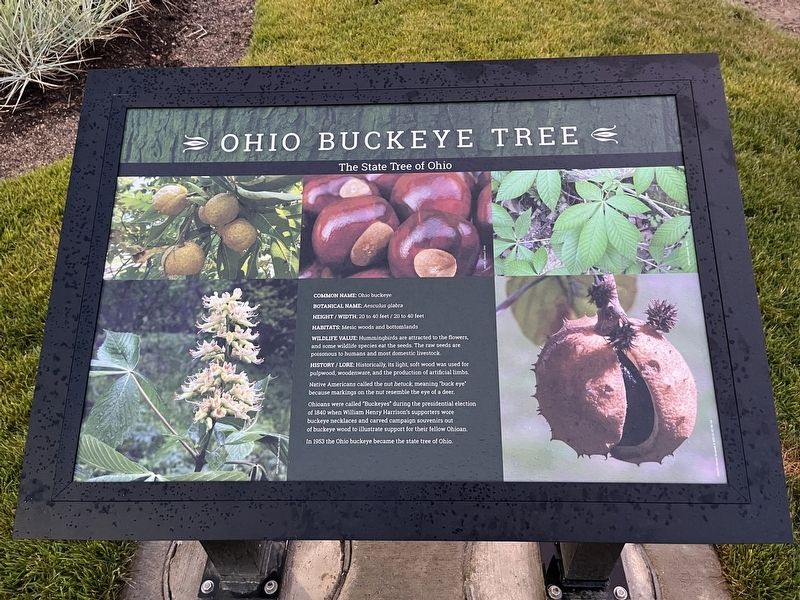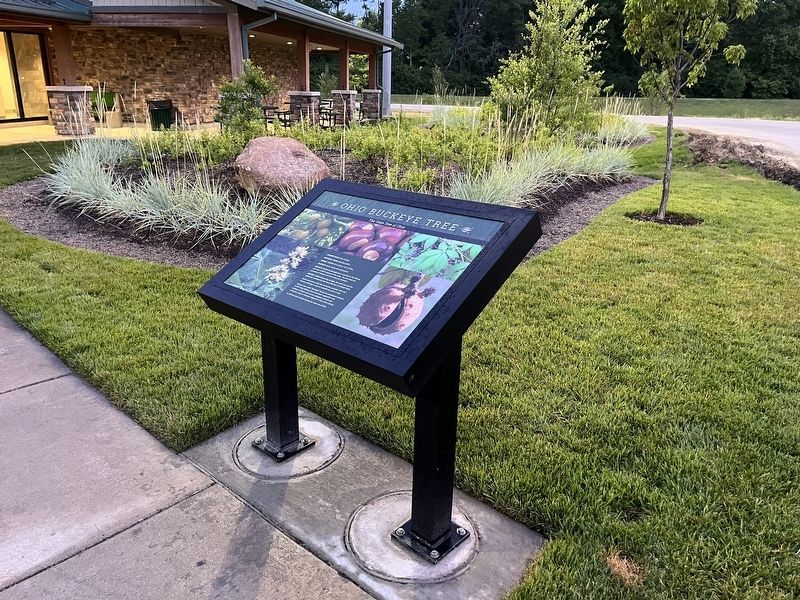Turtlecreek Township near Lebanon in Warren County, Ohio — The American Midwest (Great Lakes)
Ohio Buckeye Tree
The State Tree of Ohio
Common Name: Ohio buckeye
Botanical Name: Aesculus glabra
Height / Width: 20 to 40 feet / 20 to 40 feet
Habitats: Mesic woods and bottomlands
Wildlife Value: Hummingbirds are attracted to the flowers, and some wildlife species eat the seeds. The raw seeds are poisonous to humans and most domestic livestock.
History / Lore: Historically, its light, soft wood was used for pulpwood, woodenware, and the production of artificial limbs.
Native Americans called the nut hetuck, meaning "buck eye" because markings on the nut resembled the eye of a deer.
Ohioans were called "Buckeyes" during the presidential election of 1840 when William Henry Harrison's supporters wore buckeye necklaces and carved campaign souvenirs out of buckeye wood to illustrate for their fellow Ohioan.
In 1953 the Ohio buckeye became the state tree of Ohio.
Topics and series. This historical marker is listed in these topic lists: Anthropology & Archaeology • Government & Politics • Horticulture & Forestry • Industry & Commerce • Native Americans • Science & Medicine. In addition, it is included in the Former U.S. Presidents: #09 William Henry Harrison series list. A significant historical year for this entry is 1840.
Location. 39° 24.948′ N, 84° 7.37′ W. Marker is near Lebanon, Ohio, in Warren County. It is in Turtlecreek Township. Marker is on Interstate 71 north of Ohio Route 123, on the right when traveling south. Touch for map. Marker is in this post office area: Oregonia OH 45054, United States of America. Touch for directions.
Other nearby markers. At least 8 other markers are within walking distance of this marker. Ohio Native Plants (a few steps from this marker); a different marker also named Ohio Native Plants (within shouting distance of this marker); a different marker also named Ohio Native Plants (within shouting distance of this marker); a different marker also named Ohio Native Plants (within shouting distance of this marker); a different marker also named Ohio Native Plants (within shouting distance of this marker); a different marker also named Ohio Native Plants (about 600 feet away, measured in a direct line); a different marker also named Ohio Native Plants (about 600 feet away); a different marker also named Ohio Native Plants (about 700 feet away). Touch for a list and map of all markers in Lebanon.
Credits. This page was last revised on February 6, 2023. It was originally submitted on July 1, 2022, by Devry Becker Jones of Washington, District of Columbia. This page has been viewed 73 times since then and 10 times this year. Photos: 1, 2. submitted on July 1, 2022, by Devry Becker Jones of Washington, District of Columbia.

